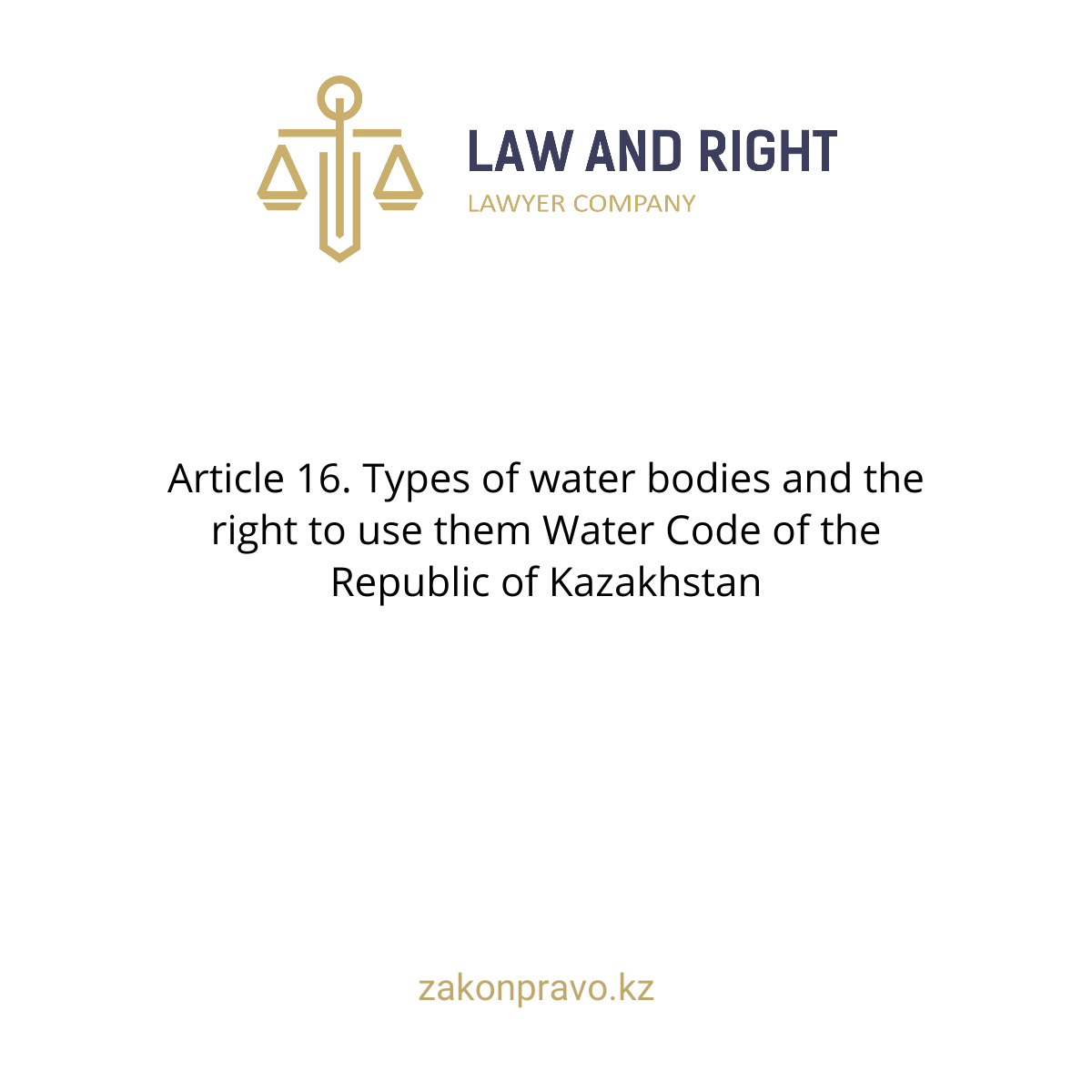Article 16. Types of water bodies and the right to use them Water Code of the Republic of Kazakhstan
1. Water bodies are divided into the following types:
surface water bodies;
underground water bodies.
2. Surface water bodies include:
rivers;
lakes;
seas;
glaciers, snowfields;
temporary watercourses;
reservoirs, ponds, flooded quarries;
wetlands;
channels equated to rivers.
The borders of rivers, lakes, seas, temporary watercourses, reservoirs, ponds, and channels equated to rivers are the bottom and shores of the corresponding water body.
3. Underground water bodies include: hydrogeological basin;
deposits and sections of groundwater;
aquifers and complexes;
springs (natural outlet of groundwater to the earth's surface).
4. According to their intended purpose, underground water bodies are divided into the following types:
1) drinking and household groundwater - groundwater that, in its natural state or after treatment, meets national standards and hygienic standards and is intended for drinking and household needs or for the production of products;
2) groundwater for irrigation of lands – groundwater that meets regulatory requirements in its quality in its natural state or after treatment and is intended for irrigation of agricultural crops;
3) groundwater for irrigation of pastures – groundwater that meets regulatory requirements in its natural state or after treatment and is intended for watering farm animals;
4) mineral and thermomineral (mineral waters with a temperature above twenty degrees Celsius) groundwater – groundwater with a relatively constant chemical composition and an increased content of biologically active mineral or organic elements that have a positive balneological effect;
5) industrial groundwater – groundwater used to extract minerals contained therein (rare elements, halogens, and others);
6) industrial and technical groundwater – groundwater that, by its quality and physical properties, is used or can be used for industrial and technical water supply;
7) thermal energy waters – groundwater with a temperature exceeding forty-five degrees Celsius, suitable for use as a source of thermal energy and (or) electricity.
5. According to the territoriality, water bodies are divided into the following types:
internal;
cross-border.
6. By size, water bodies are divided into the following types:
1) small (rivers up to two hundred kilometers long, lakes up to ten square kilometers in area, groundwater deposits with operational reserves of up to one thousand cubic meters per day);
2) medium-sized (rivers from two hundred to eight hundred kilometers long, lakes from ten to one hundred square kilometers in area, groundwater deposits with operational reserves from one thousand to ten thousand cubic meters per day);
3) large (rivers from eight hundred to one thousand kilometers long, lakes from one hundred to one thousand square kilometers in area, groundwater deposits with operational reserves from ten thousand to one hundred thousand cubic meters per day);
4) especially large (rivers over one thousand kilometers long, lakes over one thousand square kilometers in area, groundwater deposits with operational reserves of over one hundred thousand cubic meters per day).
7. Based on the special conditions of use (mode of economic activity), the following are distinguished:
1) water bodies of specially protected natural territories;
2) water bodies of the state forest fund;
3) water bodies of special national importance.
8. All water bodies are objects of common use, unless otherwise provided by the laws of the Republic of Kazakhstan.
The Code of the Republic of Kazakhstan dated April 9, 2025 № 178-VIII LRK
President
Republic of Kazakhstan
© 2012. RSE na PHB "Institute of Legislation and Legal Information of the Republic of Kazakhstan" of the Ministry of Justice of the Republic of Kazakhstan
Constitution Law Code Standard Decree Order Decision Resolution Lawyer Almaty Lawyer Legal service Legal advice Civil Criminal Administrative cases Disputes Defense Arbitration Law Company Kazakhstan Law Firm Court Cases


